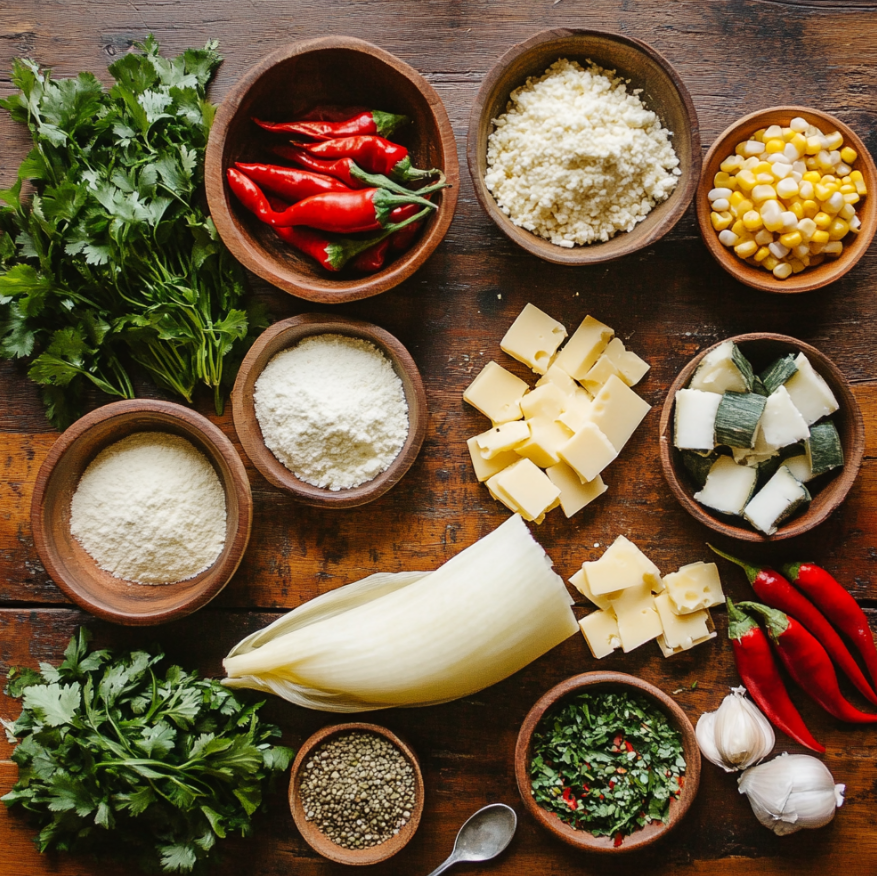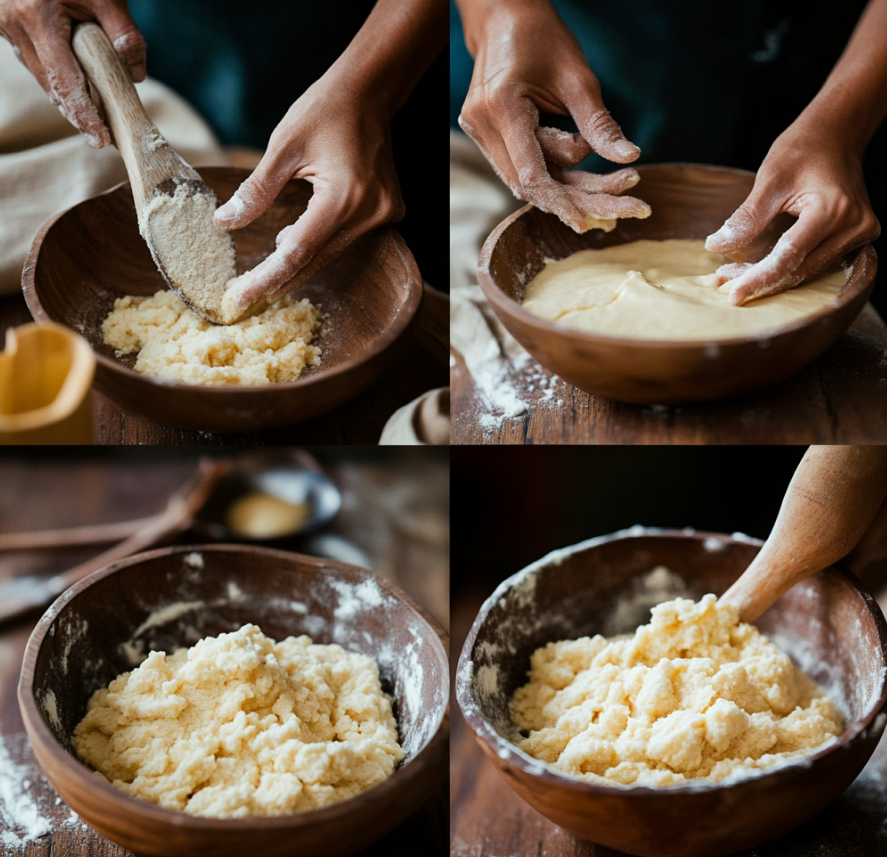Introduction to Moist Tamales
Tamales, a traditional Mesoamerican dish, are made from masa (a dough made from nixtamalized corn) and filled with various ingredients such as meats, cheeses, vegetables, or chilies, then steamed in corn husks or banana leaves. The result is a delicious, flavor-packed dish that is beloved across many cultures.
The key to a great tamale lies in its moisture. While a dry tamale can be disappointing, a moist and fluffy tamale is truly delightful. To achieve this, understanding the factors that contribute to moisture will help you master this traditional dish. For detailed traditional recipes, be sure to check out Traditional Tamale Recipes.
Choosing the Right Ingredients
The foundation of a moist tamale begins with selecting the right ingredients and preparing them correctly. Therefore, it is essential to use quality ingredients and proper preparation techniques to achieve the desired texture and flavor.
Quality of Masa
Masa is the heart of any tamale. Using fresh, high-quality masa is crucial for moisture retention.
- Fresh Masa: Whenever possible, opt for fresh masa from a local tortilleria or market. Fresh masa retains natural oils and moisture, which contribute to a soft and tender tamale.
- Masa Harina: If fresh masa isn’t available, you can use masa harina (corn flour). To rehydrate masa harina correctly:
- First, mix masa harina with warm broth or water.
- Then, ensure it reaches a soft, pliable consistency—not too wet, not too dry.
- Finally, allow the mixture to rest for about 20 minutes to fully absorb the liquid.
For more on rehydrating masa harina, you can refer to these Tips for Steaming Tamales.
Fat Content
The fat content in your masa is crucial to achieving moist tamales.
- Lard: Traditionally, lard is used, which imparts a rich flavor and a light, fluffy texture. Ensure the lard is fresh and of good quality.
- Substitutes for Lard: If you prefer an alternative:
- Vegetable shortening offers a neutral flavor and similar texture.
- Butter adds a creamy richness but may result in a slightly denser masa.
- Oil (canola, corn, or olive) can be used for a lighter option, though it may not provide the same fluffiness.
To trap air and moisture, it is important to cream the fat until it’s light and airy before incorporating it into the masa. This process results in tender tamales.

Proper Preparation Techniques
Mastering the preparation of your masa and fillings is crucial for achieving moist, delicious tamales.
Mixing the Masa
Properly mixing the masa ensures it retains moisture and develops the right texture.
- Cream the Fat: Begin by beating your chosen fat (lard, shortening, butter, or oil) until it’s light and fluffy.
- Incorporate Masa Gradually: Slowly add the masa to the creamed fat while mixing continuously.
- Add Liquid: Gradually add warm broth (chicken, vegetable, or beef) or water as you mix. This liquid adds moisture and flavor.
- Achieve the Right Consistency: The masa should be:
- Smooth and spreadable, not too thick or runny.
- Able to hold its shape when spread onto a corn husk.
To check if the masa is ready, conduct the float test—drop a small ball of masa into water; if it floats, it’s properly aerated and ready for use. If it sinks, continue beating and adjust as needed.
Beating the Dough
Adequately beating the dough introduces air, which contributes to a lighter and moister tamale.
- Use a Stand Mixer: This makes the process easier and more efficient.
- Mixing Time: Beat the masa for at least 10-15 minutes until it’s airy and smooth.
- Check Texture: The dough should be soft and fluffy.
- Avoid Overmixing: Overmixing can lead to a dense texture, so stop once the masa reaches the desired consistency.
By properly beating the masa, you ensure your tamales are not only moist but also have a delightful, light texture.

The Role of Fillings in Moist Tamales
The fillings you choose and how you prepare them significantly impact the overall moisture and flavor of your tamales.
Juicy Fillings
Selecting and preparing moist fillings directly contribute to the tamale’s overall succulence.
- Meats: Slow-cook meats like pork, beef, or chicken until they are tender and juicy. Use cooking liquids like broths or sauces to enhance moisture.
- Vegetables: Sauté or roast vegetables with ample seasoning and moisture, such as tomatoes, onions, and peppers, to create flavorful fillings.
- Sauces: Incorporate rich sauces like red chile, green tomatillo, or mole to add depth and moisture to your fillings.
For more on enhancing your tamale’s moisture, see what role ingredients like baking soda play in tamale texture at What Does Baking Soda Do in Tamales?.
Balancing Fillings with Masa
The proportion and distribution of fillings within the masa affect moisture retention and consistency.
- Proper Ratio: Aim for a balanced ratio where the filling complements the masa without overwhelming it.
- Even Distribution: Spread the filling evenly over the masa to ensure consistent moisture and flavor.
- Avoid Overfilling: Overstuffing can cause tamales to burst during cooking and lead to uneven cooking and dryness.
By balancing your fillings, you ensure that your tamales are uniformly moist and flavorful from start to finish.

Part 2: Advanced Techniques and FAQs for Perfectly Moist Tamales
Advanced Cooking Techniques
Proper cooking methods are essential to seal in moisture and achieve the perfect tamale texture.
Steaming Tamales Correctly
Steaming is the traditional method for cooking tamales while preserving their moisture.
- Prepare the Steamer: Fill the bottom of your steamer with water, ensuring it doesn’t touch the tamales. Line the steamer basket with extra corn husks to prevent sticking.
- Arrange Tamales Properly:
- Stand tamales upright with the open end facing up.
- Leave space between tamales for steam to circulate.
- Monitor Water Levels: Keep an eye on the water level and add more hot water as needed to prevent the steamer from drying out.
- Steaming Time: Steam tamales for 1.5 to 2 hours, depending on their size and filling.
When done correctly, steaming tamales locks in moisture, ensuring they are soft and succulent.
Wrapping Tamales
The way you wrap your tamales influences how well they retain moisture during cooking.
- Choosing Wrappers:
- Corn Husks: Traditional and impart a subtle, earthy flavor.
- Banana Leaves: Common in some regions, adding a unique aroma and moisture.
- Soaking Wrappers: Soak corn husks or banana leaves in warm water for 30 minutes before use to make them pliable.
- Proper Wrapping Technique:
- Spread masa evenly over the husk or leaf.
- Place filling in the center.
- Fold sides inward, then fold the bottom up to enclose.
Proper wrapping helps your tamales steam evenly and retain maximum moisture and flavor.
Common Mistakes to Avoid
Avoiding common pitfalls ensures your tamales come out moist and delicious every time.
Overcooking
Overcooking can quickly dry out tamales, making them tough and unappetizing.
- Monitor Cooking Time: Stick to recommended steaming times and check for doneness periodically.
- Maintain Steam: Ensure there’s always enough water in the steamer to produce consistent steam throughout the cooking process.
Being vigilant about cooking time and conditions preserves the tenderness of your tamales.
Not Using Enough Fat
Insufficient fat in the masa leads to dry and dense tamales.
- Measure Accurately: Follow recipe guidelines for fat-to-masa ratios, typically about 1 cup of fat per 4 cups of masa harina.
Proper fat content is essential for achieving moist and fluffy tamales.
Inadequate Steaming Setup
An improper steaming setup can result in unevenly cooked or dry tamales.
- Use a Proper Steamer: Ensure your steamer is appropriately sized and designed for steaming tamales.
- Avoid Water Contact: Tamales should not touch the boiling water directly, which can make them soggy.
A well-designed steaming setup ensures consistent and moist results.
Tips for Reheating and Storing Tamales
Proper reheating and storage methods help maintain the moisture and flavor of your tamales.
Reheating Techniques
Reheating tamales correctly preserves their moist and tender texture.
- Steaming: The best method for reheating. Steam tamales for 15-20 minutes until heated through.
- Microwave: Wrap tamales in a damp paper towel and microwave for 1-2 minutes. This method is quick but may slightly alter texture.
For more detailed methods, refer to these Best Practices for Reheating Tamales.
Storing Tamales
Proper storage keeps your tamales fresh and ready for future meals.
- Refrigeration: Place cooled tamales in an airtight container and refrigerate for up to 5 days.
- Freezing: Wrap individual tamales tightly in plastic wrap or foil and place them in freezer-safe bags. They can be frozen for up to 6 months.
Effective storage practices help maintain the moisture and flavor of your tamales over time.
FAQs About Moist Tamales
1. How do I know if my tamale dough has the right consistency?
- The masa should be soft, pliable, and slightly sticky. It should spread easily onto a corn husk without tearing and hold its shape without being too runny.
2. Can I make moist tamales without lard?
- Yes, you can substitute lard with alternatives like vegetable shortening, butter, or oil. While the flavor and texture may vary slightly, proper preparation ensures moist results.
3. What’s the best way to prevent tamales from drying out during steaming?
- Ensure a consistent steam by maintaining water levels in your steamer, wrapping tamales properly, and not overcooking them.
4. Can I fix dry tamales after they’ve been cooked?
- You can try re-steaming them with a bit of added moisture or serving them with sauces and salsas to enhance moisture.
5. What are the best wrappers to use for moist tamales?
- Corn husks are traditional and effective, but banana leaves also work well and add additional moisture and flavor.
Conclusion: Mastering the Art of Moist Tamales
Creating the perfectly moist tamale involves attention to detail at every step, from selecting high-quality ingredients to mastering preparation and cooking techniques. By focusing on the quality of masa, incorporating adequate fat and moisture, and employing proper steaming and wrapping methods, you can elevate your tamale-making skills and enjoy delicious, tender tamales every time. Don’t be afraid to experiment with different fillings and flavors to find your personal perfect tamale. With practice and these expert tips, you’ll be well on your way to becoming a tamale maestro.
For more innovative ways to enjoy tamale flavors, try this Tamale Pie Recipe, which offers a convenient twist on the traditional dish.
